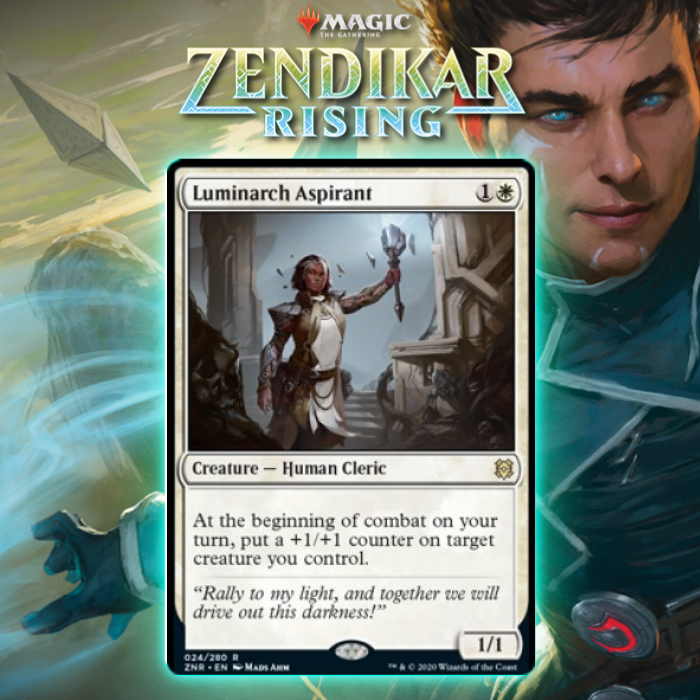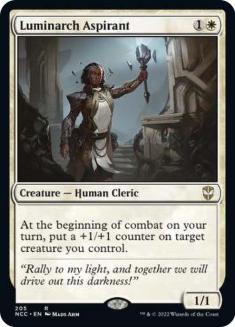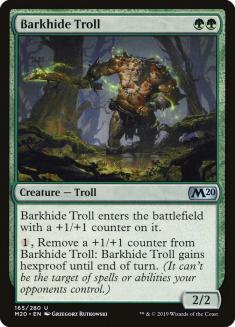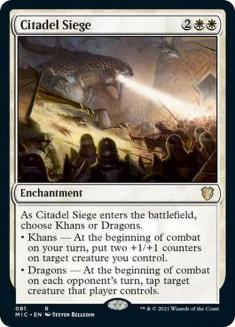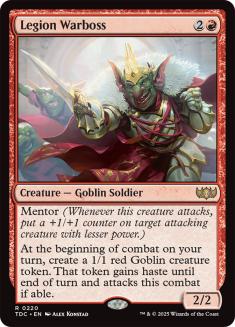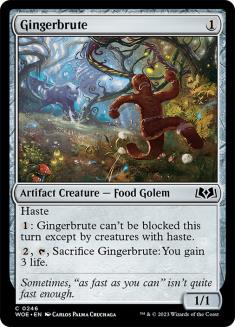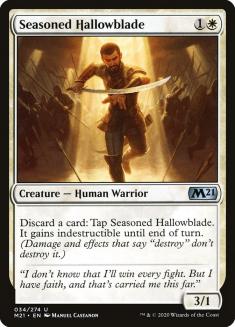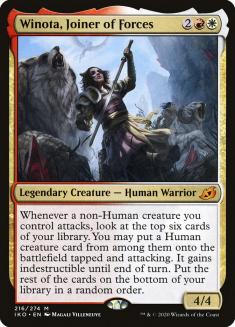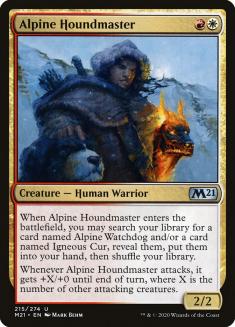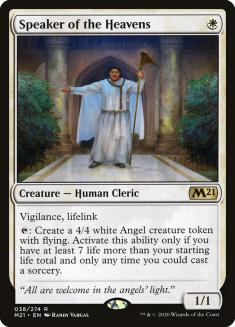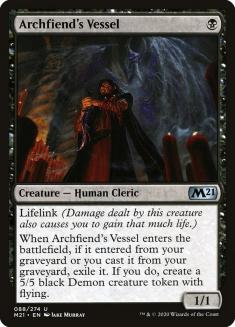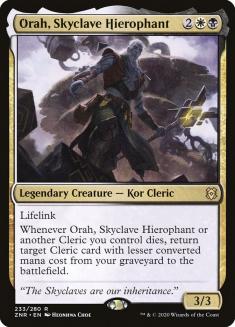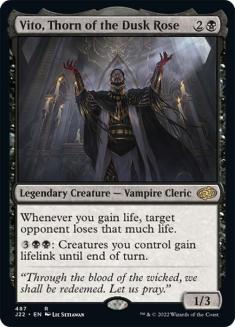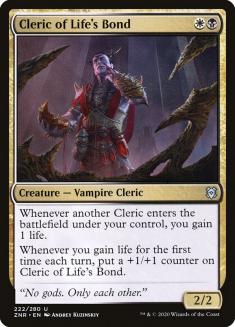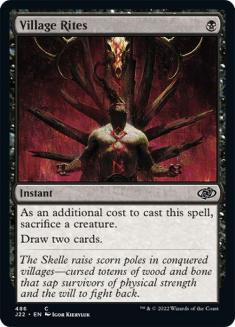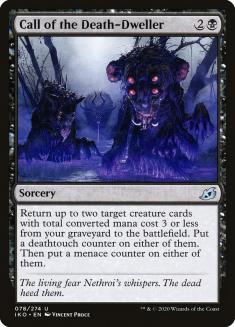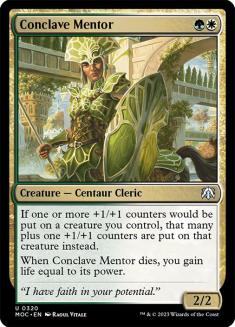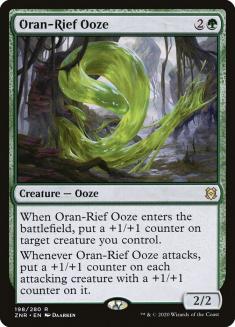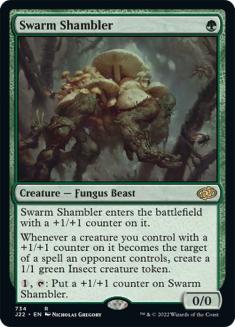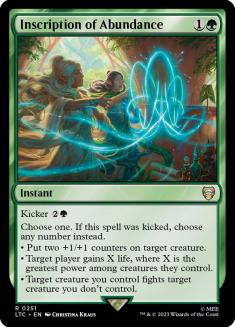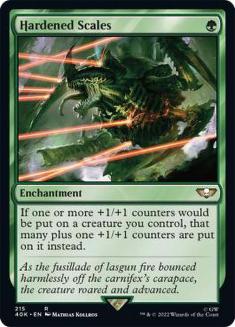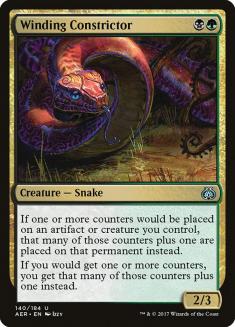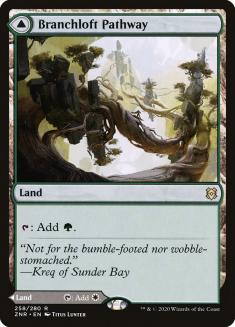When Luminarch Aspirant was previewed, I was taken aback reading it; the rate on the card is pretty amazing as is, and on top of that it offers both more options and more opportunity for synergy than its fairly simple text box might seem to present. I’m normally pretty hesitant to be effusive in my preview season articles, but this card genuinely seems fantastic to me and in my mind it’s more a question of whether the right homes will exist for it rather than whether the power level is there.
Still, people at large seem to be pretty lukewarm on the card. It’s certainly possible I’m over-eager, but it’s also possible that people are just so jaded about white cards at this point that we feel halfway trained to just dismiss them outright. There’s a point where raw efficiency is so high that you have to respect it, and my aim today is to show you why I believe Luminarch Aspirant has very much cleared that bar and has all the potential to be a key player in aggressive decks in these coming months.
The floor on Luminarch Aspirant is Barkhide Troll. You cast your Luminarch Aspirant on your second turn of the game as a 1/1, and as you go to combat it turns itself into a 2/2. Entering combat on your third turn, it adds another counter to itself and you get to attack with a 3/3 on Turn 3, just like you would with Barkhide Troll. It’s obviously not the cleanest comparison, but Barkhide Troll has seen a ton of play in Mono-Green Aggro the last couple of months and that’s largely on the back of it attacking as a 3/3 on Turn 3, which is the absolute floor on Aspirant.
This floor will keep getting raised as the game continues; on Turn 4 you’re attacking with a 4/4 and your two-drop has now got in for seven damage. On Turn 5 your now-5/5 has got in for twelve damage. The absolute floor on this card is enough to make it appeal as a very solid attacker on the back of raw efficiency alone.
That’s just where it starts…
Anyone who has played against Citadel Siege in Limited will surely remember how soul-crushing its Khans mode is as your opponent gets to dominate every combat as the aggressor, choosing the exact right creature to pump to make your blocks as hard as possible. Citadel Siege never really broke through in Constructed, at least partially due to spending most of its life existing alongside Dromoka’s Command, but if you remember it, then you’ll surely realise quite how powerful this style of effect is in games that are about combat.
Luminarch Aspirant’s ability is not as dramatic as Citadel Siege’s, as the card costs half as much mana, but its impact is still going to add up in such a way that you will generally have the bigger influence on combat.
I’ve seen a lot of people just toss all of this aside to say that Aspirant lines up poorly against removal spells, which I strongly disagree with on two counts. First, you can just load up counters on a different creature, say one with some ability that particularly benefits from the power boost, like flying. Suddenly your opponent has to choose between whether that removal spell goes after the threat that you’ve just improved and made all the more scary, or the Luminarch Aspirant that is going to keep accruing value if it isn’t removed. A friend, upon hearing me give this description, described Aspirant as the white Legion Warboss, and he’s right; if I get to go to combat with this card on the battlefield even once, I will get a bit of value from it such that your future removal spell can no longer cleanly trade with everything I just spent my mana on.
Second, a big problem with Citadel Siege in Constructed was that you could just run your opponent out of threats. Every Citadel Siege they draw is a creature that they’re not drawing, so if you can kill the accompanying creatures those Sieges can’t pump anything anymore. However by putting the growth effect on a creature instead of an enchantment, like we see here with Luminarch Aspirant, whilst you do make it easier to answer due to how frail creatures can be in exchange the chance that you run out of creatures to put counters on with the ability is that much lower.
Creatures (32)
- 3 Gingerbrute
- 4 Bonecrusher Giant
- 3 Winota, Joiner of Forces
- 4 Seasoned Hallowblade
- 4 Selfless Savior
- 4 Alpine Houndmaster
- 2 Alpine Watchdog
- 2 Igneous Cur
- 4 Luminarch Aspirant
- 2 Shatterskull Charger
Lands (20)
Spells (8)

Here’s an example of Aspirant just being a good card on rate. It’s a solid attacker when you need it to be, but Gingerbrute and Seasoned Hallowblade wear the counters that Aspirant grants particularly well also. Meanwhile we have Selfless Savior to protect either the Aspirant itself or whatever creatures you choose to make huge with the Aspirant’s ability.
I’ve always felt like the secret to Winota, Joiner of Forces is if you’re hitting anything with her then you’re feeling pretty good, so I’ve not gone out of my way to include any high-value Humans; Seasoned Hallowblade, Luminarch Aspirant, and Alpine Houndmaster will all do just fine, with all three of these setting up impressive longevity should your Winota be answered.
I am unsure about Shatterskull Charger, but it interacts adorably with Aspirant. When you curve your Aspirant into a Turn 3 Charger you’ll find yourself attacking with a 5/4 hasty trampler that just gets to stay on the battlefield, which sounds fairly unreasonable.
Creatures (33)
- 3 Woe Strider
- 3 Vito, Thorn of the Dusk Rose
- 2 Selfless Savior
- 4 Archfiend's Vessel
- 4 Speaker of the Heavens
- 4 Orah, Skyclave Hierophant
- 2 Cleric of Life's Bond
- 3 Taborax, Hope's Demise
- 4 Luminarch Aspirant
- 4 Nullpriest of Oblivion
Lands (21)
Spells (6)

One appealing way of taking advantage of Luminarch Aspirant is to try to make sure the creatures you’re loading up with +1/+1 counters have combat abilities that will make those counters more meaningful. A pair of one-drops that play particularly well with that in mind are Archfiend’s Vessel and Speaker of the Heavens, where their lifelink abilities make these creatures growing all the more threatening. Growing your Speaker of the Heavens enough that it will soon start making Angels with all the life it is gaining you, especially with vigilance halting any counterattacks is powerful, whereas forcing your opponent to kill a large Archfiend’s Vessel means it is ready to be reanimated with Agadeem’s Awakening; Nullpriest of Oblivion; or Orah, Skyclave Hierophant is great as well. We’re maximising Luminarch Aspirant by ensuring our opponent has to kill others creatures instead.
Getting to play Orah and segue into Cleric tribal is a really convenient side effect of Luminarch Aspirant and both these one-drops all incidentally being Clerics. On top of these plans, there’s also the potential to burn your opponent out with Bastion of Remembrance and Vito, Thorn of the Dusk Rose, either individually or especially in tandem. With so much lifelink in the deck, and especially with your lifelinkers spiralling out of control thanks to Aspirant, Vito’s ability is deeply threatening. Meanwhile if you ever manage to assemble Bastion, Woe Strider, and Orah all at once, the chances are your opponent is just going to instantly die as you get to create a bunch of sacrifice cascades with all the Clerics you have sitting around.
I’m unsure about Cleric of Life’s Bond, which works really well with Speaker of the Heavens and Vito and will keep growing as your creatures connect with your opponent, but may ultimately be too low power-level. It’s possible you could instead shift the deck a bit, incorporating Village Rites to make sure you more reliably have Clerics in your graveyard to return with Orah, and Call of the Death-Dweller as an additional way to enable your Archfiend’s Vessels. Regardless this deck seems like a lot of fun to me and like it’s pulling together some powerful synergies.
So you can take advantage of Luminarch Aspirant just being an incredibly efficient threat, and you can try to push this further by making sure the creatures you’re powering up are particularly well-suited to those additional +1/+1 counters. You can even take advantage of it being a Cleric! What about if we pushed synergies with this card even further though, taking advantage of the fact that it’s specifically +1/+1 counters it distributes?
Creatures (32)
- 2 Scavenging Ooze
- 4 Stonecoil Serpent
- 4 Basri's Lieutenant
- 4 Selfless Savior
- 4 Conclave Mentor
- 3 Wildwood Scourge
- 4 Swarm Shambler
- 4 Luminarch Aspirant
- 3 Oran-Rief Ooze
Lands (22)
Spells (6)

Selesnya Counters was a deck people were excited about during Core Set 2021 preview season that never quite panned out in large part because both Wilderness Reclamation and Nissa, Who Shakes the World have been keeping a tight lock on the Standard format at different periods of time since then. Not only is the format’s power level about to tone down a lot, Luminarch Aspirant is the actual perfect card in this particular deck.
That Citadel Siege comparison I brought up earlier? Well, with a Conclave Mentor on the battlefield your Aspirant actually is a Citadel Siege, which is honestly kind of absurd. Every time you trigger your Aspirant, any copies of Wildwood Scourage you have on the battlefield will trigger too, growing ever larger. In addition spreading counters around synergises just so well with Oran-Rief Ooze, setting up to make your creatures terrifying in combat, or with Swarm Shambler and Basri’s Lieutenant, ensuring that if any of your creatures are targeted with removal spells you will get some tokens to keep your army strong. If anything is going to make this deck good, it is Luminarch Aspirant.
Inscription of Abundance is pretty impressive in its own right too though, and in this deck serves as a powerful upgrade to Primal Might. The pump spell mode not only allows you to make some really aggressive attacks, it works just as well with all the +1/+1 counters synergies as you’d expect. Meanwhile the fight spell mode will be effective with Aspirant, which can help grow the right creature big enough to attempt to tackle down your opponent’s threat, and the kicker on Inscription adds to the deck’s variety of late-game mana sinks.
Creatures (31)
- 3 Llanowar Elves
- 3 Elvish Mystic
- 4 Hangarback Walker
- 4 Winding Constrictor
- 1 Rishkar, Peema Renegade
- 4 Voracious Hydra
- 4 Stonecoil Serpent
- 4 Conclave Mentor
- 4 Luminarch Aspirant
Planeswalkers (3)
Lands (22)
Spells (4)

Losing Walking Ballista was a huge hit to the Hardened Scales decks in Pioneer, but I’m excited to give them another try for one reason: Luminarch Aspirant fits so well getting to serve as both something to cast in the developing turns and yet also a potent payoff as the game continues. Here we have twelve copies of that Conclave Mentor effect we see in the Standard deck, with Mentor being joined by Hardened Scales and Winding Constrictor. This means the most powerful synergy the Standard deck takes advantage of, turbo-charging Aspirant’s triggered ability with Conclave Mentor, will come together even more frequently in the Pioneer version. Imagine getting to put three or even four counters on a creature at the start of every single one of your combat steps; your opponent will die, quickly.
You might think three colours of mana is a big ask for a deck that wants all its lands to enter the battlefield untapped, but Branchloft Pathway really helps here making the mana finally feel good without having to stretch to playing the full four Mana Confluence or any tapped lands. I’m looking forward to finding out if this deck can still put up a good fight thanks to these new additions.
Hopefully this article gives you a good idea of why I’m so excited for Luminarch Aspirant; its rate is great, but it also does not take much to really push its ability and pull together some powerful synergies in the process.

